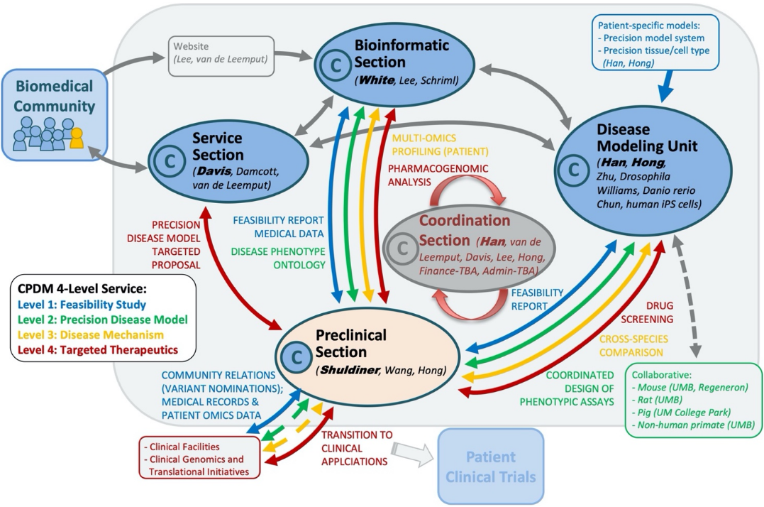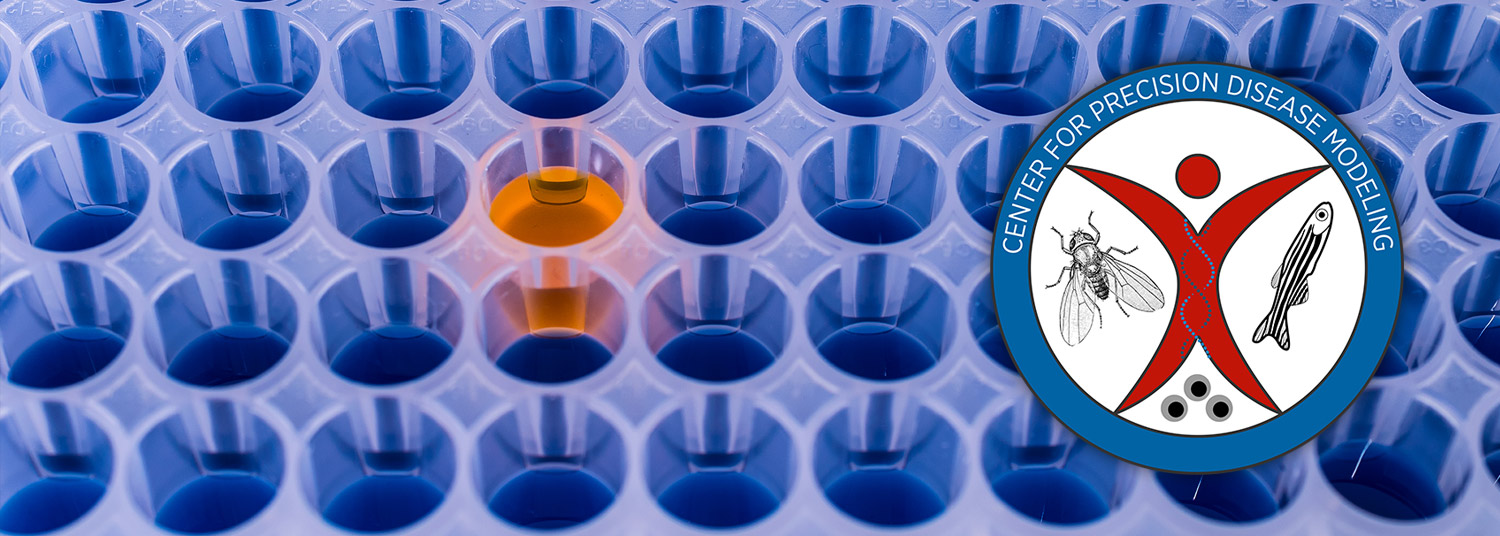Preclinical Section
Our Mission
The mission of the Preclinical Section at CPDM-UMSOM is to facilitate close interactions between the Disease Modeling Unit (DMU) and the clinicians who submit the genetic variants, so that clinical information needed for the DMU can be effectively collected, and the scientific discoveries made by using the Precision Disease models can be efficiently translated to the development of a targeted therapeutic treatment that could benefit patients. Moreover, the Preclinical Section actively seeks out collaborative opportunities with genomic medicine and translational research initiatives to obtain more clinical data and variant nominations. They are responsible for developing effective strategies to obtain high-quality clinical data, including medical records, genotype data, biomarker profiles, and omics data that meet the requirements for integrated bioinformatics analysis. This enables the Bioinformatic Section to develop cross-species taxonomy and ontologies. The Preclinical Section will share medical expertise to aid the Bioinformatic team, and other Center Sections, in interpreting the results within a clinical context. For example, they will work with the Disease Modeling Unit to develop the most clinically relevant assays and interpret findings in the Precision Disease models and evaluate their potential clinical implications. The Preclinical team relates the findings to the clinicians. Furthermore, if the Precision Disease model functional and mechanistic studies reveal potential targets for intervention, the Section will work with the Disease Modeling Unit to design targeted therapeutics screens to identify treatments that might alleviate the phenotype in the disease model. They will then work with the Bioinformatic team to analyze and interpret these pharmacogenomic data. If promising, the Preclinical Section will play a critical role in moving the CPDM findings towards clinical trials to ultimately directly benefit the patients.
Roles of the Preclinical Section and its interaction with the other center sections
The Preclinical Section is tasked to provide medical expertise to the Center’s pipeline projects in interpreting medical records and translating scientific discoveries using Precision Disease models to personalized medicine treatment that benefit patients. In order to carry out our tasks and best serve the Center’s overall mission, we have set the following specific aims:
- Obtain, evaluate and interpret high-quality clinical data associated with the genetic variants.
- Share expertise to develop clinically relevant phenotypic assays for the Precision Disease models and coordinate with clinicians.
- Contribute medical knowledge to develop a testable hypothesis for each disease mechanism.
- Design therapeutic screening assays and translate the findings in the Precision Disease models into personalized medicine.
To this end, the Preclinical Section interacts with other sections as following:
- Interaction with the Bioinformatics Section: Collaborate on variant prioritization and feasibility report, for which we will provide the medical records and patient information; link patient and Precision Disease model phenotypes, biomarker changes and omics data through integrated taxonomy and ontology for cross-species interpretation of results; and, bioinformatic analysis of pharmacogenomic studies.
- Interaction with the Disease Modeling Unit: Collaborate on variant prioritization and feasibility report, providing medical expertise to Level 1 and 2 CPDM services; coordinate design of phenotypic assays for the disease models that are relevant in the clinical setting; develop testable disease mechanistic hypotheses by combining disease model and patient data; and, collaborate to design and carry out targeted therapeutic screens using the Precision Disease models.
- Interaction with the other Center Sections: Work with the Service Section to coordinate community communications, mediate project design between CPDM Sections and the user, as well as present our targeted treatment proposals, quotes and final reports to the customer. Interact with the Coordination Section to coordinate collaborative activities with the clinical and research community and other initiatives, and they will be our main point of contact to inform, and obtain feedback from, the Steering Committee, NIH Program Staff and the External Advisory Board. Reporting: For example, they will coordinate interaction with the other Center Sections to include the Service Section contributions to the evaluation of the community-based nominations of human genetic variants for Precision Disease modeling in the CPDM progress reports.
- Interaction with clinical facilities: The Preclinical Section will actively seek out interactions and collaborative opportunities with UMB-based and external clinical genomics and translational research initiatives: to engage the community and increase the number of community-nominated variants; implement strategies to ensure collected data and metrics meet standards for a smooth transition between clinical and research applications and are maximally informative for Bioinformatic analysis; and, to coordinate Disease Modeling findings with clinical phenotypes, and comparative assays to facilitate cross-species comparison.

